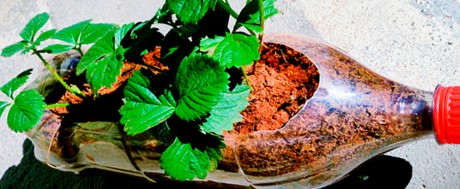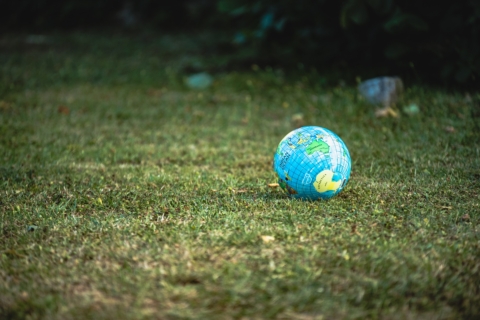
Despite increasing attention to circular entrepreneurship and sharply rising raw material prices, Dutch manufacturing companies still often miss circular opportunities, which has not yet led to a reduction in total material use. Circular innovations are often complex and expensive, while customers hardly have any extra money to spend on (more) circular products. Yet it is possible to generate not only social but also financial returns with more circularity. This requires strategic choices. The earnings model should lean less on the product and more on services that ensure that products last longer. For example, by keeping products partly in ownership. But also by focusing more on the reuse of materials and components in production. A number of Dutch companies are already working on this. This is according to an ING Research publication released today.
Strategic choice for central role of value retention in business model necessary
To really get to grips with circularity, manufacturing companies need to make strategic choices and give value retention of products a central role in the business model. A different view of the value proposition offered, i.e. the package of ‘benefits’ that a company offers its customers, can greatly enhance both the value creation of the producer and the value retention of his product, and thus circularity.
Focusing service around products
More focus on services from after-sales service, predictive maintenance to complete unburdening are central to such a choice. By taking back products and reusing as many (parts) as possible, the remaining product value can be utilized and material use reduced. A manufacturing company can also ensure more sustainable use of a delivered machine or device through service, training and advice to the customer, for example, because it is then used in the right way or because more preventive or predictive maintenance is carried out. This extends the life of the product.
Gert Jan Braam, ING Sector Banker Industry: “By offering more services that make products last longer, manufacturing companies can make their revenues less dependent on product sales. This reduces the use of materials, can increase turnover and make the cash flow more stable. For this, it is important to make a strategic choice for more circularity and also to take more low-impact steps, for example by addressing the loss of value of products already in the design phase.”
The material use of the Dutch manufacturing industry has not yet declined
Despite the fact that the circular performance of Dutch manufacturing companies compares favorably with that of European sector peers, total material use increased 2.5% (in the latest available measurement*) and the amount of waste increased by almost 1%. In the area of recycling, growth is stagnating. There are no indications of a recent trend break yet. Larger steps are required to become more circular. Efficient use of materials goes beyond recycling, which is often applied in the Netherlands; it starts at the product design stage.
Barriers to circularity on the demand and supply side of the market
Barriers to circular innovations exist on both the demand and supply side of the market. For example, for many consumers, price is more important than the sustainability of products. This often makes it more difficult for producers to recoup investments in circularity. Indeed, circular innovations are often accompanied by higher operating costs due to development costs, such as for identifying reusable goods, finding suitable partners and organizing return logistics to enable reuse. Implementation, such as the actual collection and sorting of reusable products and materials and the often required cooperation with external parties, also involves costs.
Sustainable customer solution also interesting for business: Vanderlande, Aebi Schmidt, ASML
Companies like Vanderlande and Aebi Schmidt save a lot of material and energy by keeping their products partly owned and selling the use of their products as a service. By taking responsibility for the end result, they unburden the customer and can use their products, respectively baggage handling systems and road maintenance gritting and sweeping machines, as efficiently as possible. Not only circularity, but also turnover, customer relations and cash flow can benefit. ASML, for example, is increasingly intensifying its services around products with subscriptions to upgrades and maintenance, partly in order to bind customers to the company for a long time.
Concrete circulaire stappen nodig om verandering in gang te zetten
Concrete stappen zijn nodig om materiaal- en afvalstromen zo vroeg mogelijk aan te pakken en waar mogelijk te voorkomen. Dat begint bij een circulair productontwerp. Bijvoorbeeld door het maken van modulaire of demontabele producten, het opknappen van gebruikte producten of de door gebruikte materialen en onderdelen in te zetten. Zo heeft meubelfabrikant Vepa samen met Plantics uit Arnhem een oneindig recyclebare stoel ontworpen, waarvan de kuip bestaat uit plantaardige restanten en een biologisch bindmiddel dat uit reststromen wordt gewonnen.
Concrete circular steps needed to initiate change
A more circular way of producing can only be achieved by acting together with partners. These include suppliers, customers and supporting network partners, such as recyclers and financiers. In order to purchase renewable, biodegradable or reusable raw materials and materials or to retrieve used materials for reuse via return logistics, a manufacturing company cannot do without partners. The introduction of material passports – with information about the properties of products and systems to facilitate reuse – for example, must also be shaped in an unambiguous way within a network of parties. Collaboration and circularity thus go hand in hand.
* Latest available measurement 2018, with no evidence of a recent trend change yet.
Read the entire publication



